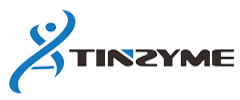
Firefly Luciferase mRNA (N1-Me-Pseudo UTP)
2023-05-08
ASFV Identification qPCR Mix UNG plus
2023-07-14Product Number: SGS3101, SGS3102
Components
This kit includes Sanger Dye ready reaction mix and 5x Sequencing buffer.
| Component | Volume | Storage |
| Sanger Dye ready reaction mix | 50uL | -15 to -25 °C |
| 5x Sequencing buffer | 250ul | -15 to -25°℃ |
- ·Avoid excess (that is, no more than 5-10) freeze-thaw cycles.
- ·Before each use of the kit, allow the frozen stocks to thaw at room temperature (do not heat).
- ·Mix each stock thoroughly and then centrifuge briefly to collect all the liquid at the bottom of each tube.
- ·Whenever possible, keep thawed materials on ice during use. Do not leave reagents at room temperature for extended periods.
Description
Sanger sequencing, also known as chain termination sequencing, is a method of DNA sequencing developed by Frederick Sanger and colleagues in 1977. Sanger sequencing is the gold standard for both first-generation and next-generation sequencing. It is currently the international standard for all gene testing, including fluorescence quantitative PCR TaqMan probe method, ordinary PCR method, chip method, second-generation sequencing method, mass spectrometry method, and other methods.
The Sanger sequencing kit provides the required reagent components for the sequencing reaction in a ready reaction, pre-mixed format. You need only provide your template and the template-specific primer.
These reagents are suitable for performing fluorescence-based cycle sequencing reactions on single-stranded or double-stranded DNA templates, on polymerase chain reaction (PCR) fragments, and on large templates (for example, BAC clones).
Protocol
Template Quantity
The table below shows the amount of template to use in a cycle sequencing reaction.
If possible, quantitate the amount of purified DNA by measuring the absorbance at 260 nm or by some other method.
| Template | Quantity |
| PCR product: 100-200 bp 200-500 bp 500-1000 bp 1000-2000 bp >2000 bp | 1-3 ng 3-10 ng 5-20 ng 10-40 ng 20-50 ng |
| Single-stranded | 25-50 ng |
| Double-stranded | 150-300 ng |
| Cosmid, BAC | 0.5-1.0 ug |
| Bacterial genomic DNA | 2-3 ug |
To obtain clean sequencing data, we recommend the following purification methods:
Cycle Sequencing
To prepare the reaction mixtures:
| Reagent | Quantity |
| Sanger Dye ready reaction mix | 8.0uL |
| Template | See the table in "Template Quantity" |
| Primer | 3.2pmol |
| Deionized water | To 20uL |
Mix well and spin briefly.
The 5X Sequencing buffer is supplied at a 5X concentration. If you use it for sequencing reactions, be sure the final reaction volume is at a concentration of 1X. For example, for a reaction in 20uL final volume, you would use 1uL of Sanger Dye ready reaction mix and 3.6uL of 5X Sequencing buffer as shown below.
| Reagent | Concentration | volume | Volume |
| Sanger Dye ready reaction mix | 2.5X | 0.8uL | 0.2uL |
| 5x Sequencing buffer | 5X | 3.6uL | 0.9uL |
| Template | - | See the table in "Template Quantity" | See the table in “Template Quantity" |
| Primer | - | 3.2pmol | 0.8pmol |
| Deionized water | - | To 20uL | To 5uL |
| Final Volume | 1X | 20uL | 5uL |
Mix well and spin briefly.
Purifying Extension Products
The best results are obtained when unincorporated dye terminators are completely removed prior to electrophoresis. Excess dye terminators in sequencing reactions obscure data in the early part of the sequence and can interfere with basecalling.
To obtain clean sequencing data, we recommend the following purification:
Ethanol/EDTA Precipitation
- ·Remove the 96-well reaction plate from the thermal cycler and briefly spin.
- ·Add 5 uL of 125 mM EDTA to each well.
- ·Add 60 uL of 100% ethanol to each well.
- ·Seal the plate with aluminum tape and mix by inverting 4 times.
- ·Incubate at room temperature for 15 min.
- ·With the centrifuge use a plate adapter and spin the plate at the maximum speed as follows:
- 1400-2000 x g for 45 min or 2000-3000 × g for 30 min
- ·Invert the plate and spin up to 185 × g, then remove from the centrifuge.
- ·Add 60 uL of 70% ethanol to each well.
- ·With the centrifuge set to 4 °C, spin at 1650 x g for 15 min.
- ·Invert the plate and spin up to 185 × g for 1 min, then remove from the centrifuge.
- ·To continue, resuspend the samples in injection buffer.
- ·To store, cover with aluminum foil, and store at 4 °C.
Ethanol/EDTA/Sodium Acetate Precipitation
- ·Remove the 96-well reaction plate from the thermal cycler and briefly spin.
- ·Add 2 uL of 125 mM EDTA to each well.
- ·Add 2 uL of 3 M sodium acetate to each well.
- ·Add 50 uL of 100% ethanol to each well.
- ·Seal the plate with aluminum tape and mix by inverting 4 times.
- ·Incubate at room temperature for 15 min.
- ·With the centrifuge use a plate adapter and spin the plate at the maximum speed as follows:
- 1400-2000 x g for 45 min or 2000-3000 x g for 30 min
- ·Invert the plate and spin up to 185 × g, then remove from the centrifuge.
- ·Add 70 uL of 70% ethanol to each well.
- ·With the centrifuge set to 4C, spin at 1650 x g for 15 min.
- ·Invert the plate and spin up to 185 × g for 1 min, then remove from the centrifuge.
- ·To continue, resuspend the samples in injection buffer.
- ·To store, cover with aluminum foil, and store at 4°C.
Keywords
Sanger Sequencing kit, big dye kit.
Manual

